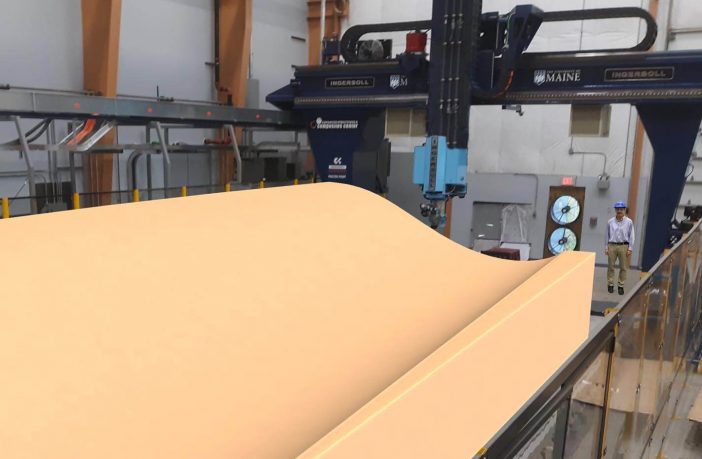- The University of Maine in the USA has been awarded $2.8 million from the U.S. Department of Energy Office of Energy Efficiency and Renewable Energy to develop a 3D printing solution for manufacturing large, segmented wind blade molds.
- In addition, the UMaine Composites Center will collaborate on a $4 million award to Oak Ridge National Laboratory (ORNL) to apply robotic deposition of continuous reinforcing fibers in wind blades.
Currently, innovation in large wind blade technology is a costly and time-intensive process. Molds and tooling for large blades can cost upward of $10 million. The time to market of 16–20 months stifles innovation in this growing market.
“Very large wind blade molds will be printed on the world’s largest polymer 3D printer located at the UMaine Composites Center using recyclable bio-based materials reinforced with wood,” said Habib Dagher, executive director of the Advanced Structures and Composites Center. “By combining cutting-edge 3D printing manufacturing with bio-based feedstocks, our team estimates that new blade development costs can be reduced by 25% to 50% and accelerated by at least 6 months. Molds produced using these materials can be ground up and reused in other molds, making them a more sustainable solution.”
The molds will incorporate 3D printed heating elements using a new technology developed at ORNL. Control of mold surface temperatures is a critical mold manufacturing requirement, and the new ORNL technology enables robotic deposition of heating elements, reducing mold fabrication time and cost.
“Oak Ridge National Laboratory will apply expertise in additive manufacturing, carbon fiber technology and materials science to advance the use of 3D printing in wind energy applications,” said ORNL’s Xin Sun, interim associate laboratory director for energy science and technology. “We look forward to collaborating with UMaine to optimize these clean energy technologies to benefit the environment and boost the economy.”
The outcome of the proposed research is to transform mold production as a key enabler for more rapid and more cost-effective large wind turbine blade development. TPI Composites and Siemens Gamesa are partnering with the UMaine Composites Center on the project. A successful demonstration will put both SGRE and TPI in a position to transition the additive manufacturing solution into practice.
SGRE is the world’s leading supplier of offshore wind turbines and TPI produces approximately 18% of the world’s wind blades. Ingersoll Machine Tools, the 3D printer manufacturer, and Techmer PM, the cellulosic-thermoplastic feedstock compounder, also are on the team, providing the ability to scale-up both equipment and feedstock production.
Author: Bryan Groenendaal















